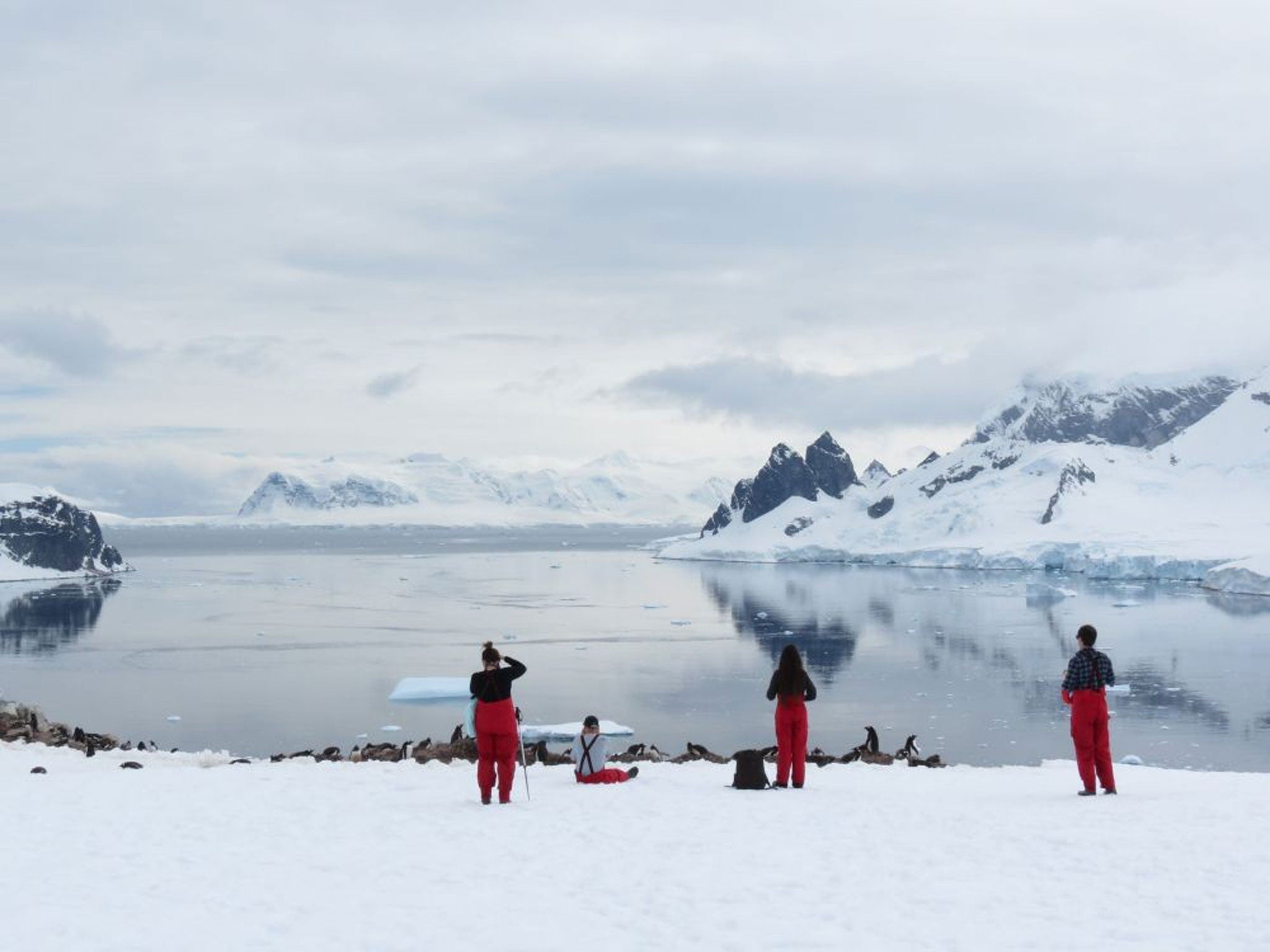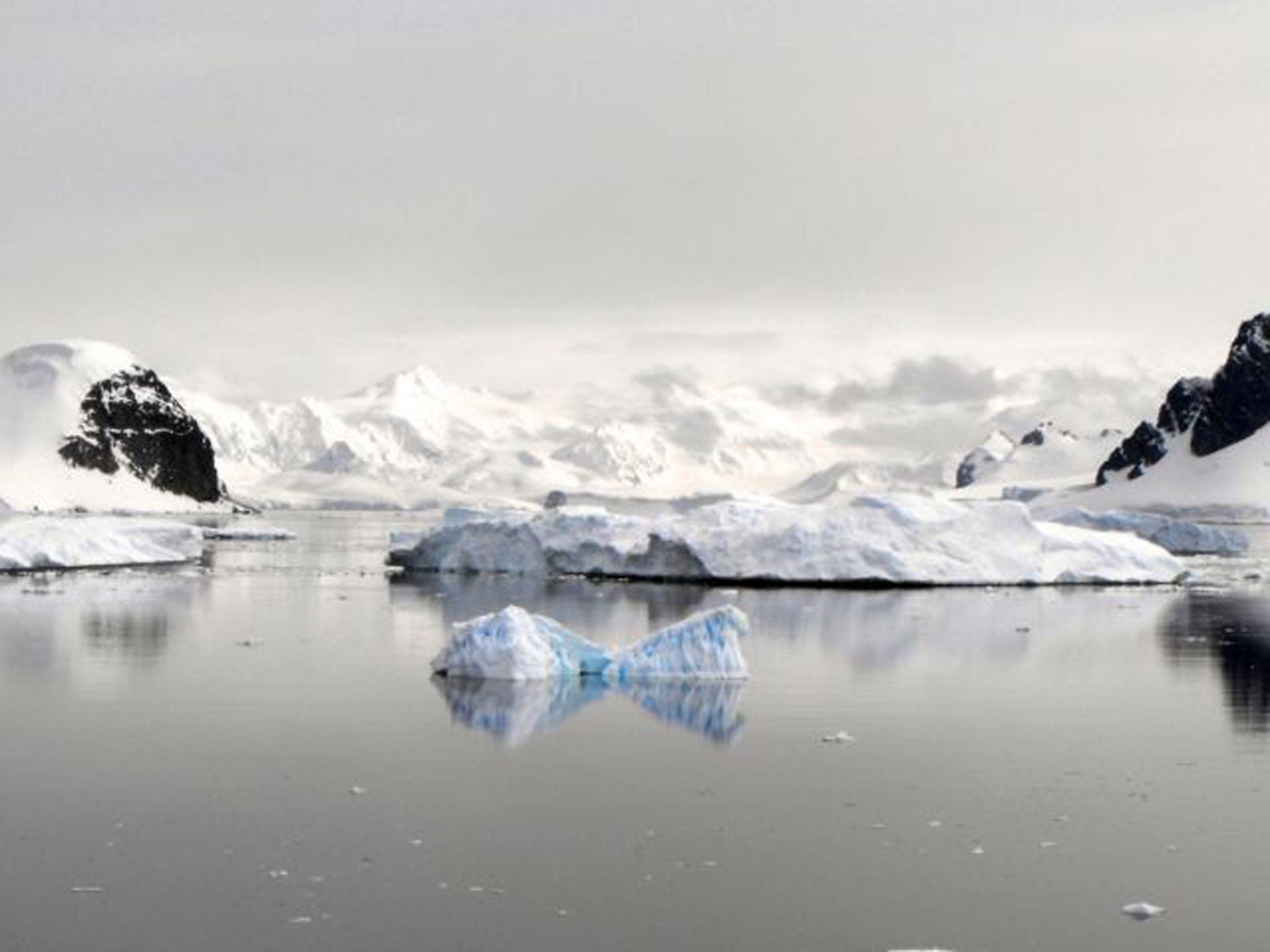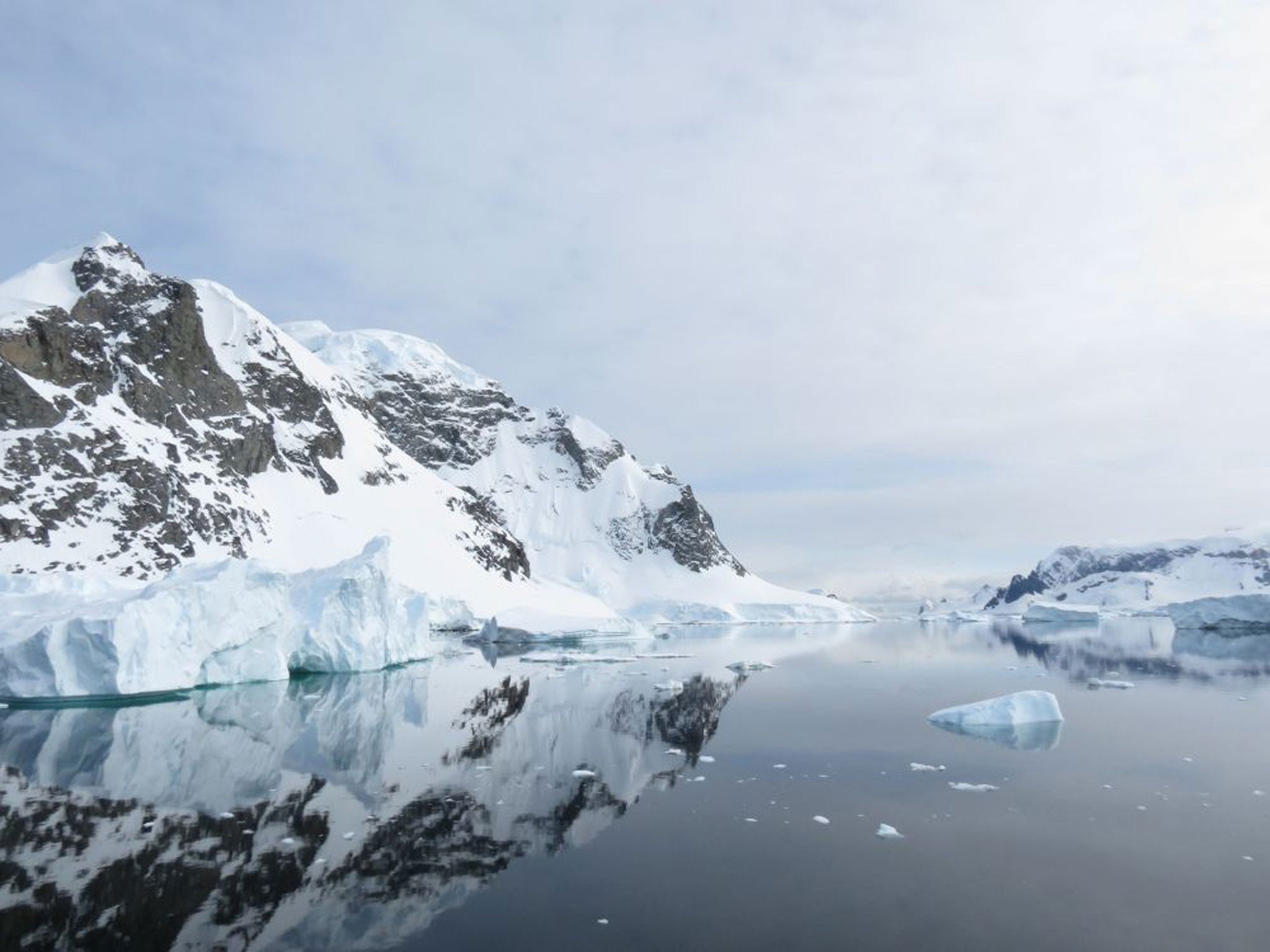The Independent's journalism is supported by our readers. When you purchase through links on our site, we may earn commission.
Antarctic cruise: The sound of silence on a voyage to the White Continent
In the company of a veteran scientist for the British Antarctic Survey, Paul Bignell encounters choppy seas, curious wildlife and the bewildering sight of the never-setting summer sun

As dense fog slowly disperses and heavy seas subside, the sliver of white on the horizon – at first barely visible – is now unmistakable. The peninsula of the great White Continent slowly approaches at a steady 12 knots. You grasp for adjectives to describe what you're witnessing in Antarctica as sheer mountains suddenly come into view, plunging straight into the sea. The first icebergs begin to float eerily past, like giant Henry Moore sculptures. Many of them are vast and contain at their core the deepest blue hues; others carry passengers: a lounging seal on one, a cluster of Gentoo penguins on another. Closer to our vessel, giant albatrosses fly alongside, as if guiding us through the ice flow, wing tips almost skimming over the dark and deadly waters.
This vista, thankfully largely unchanged since first witnessed by explorers in the 19th century, is a welcome one, bringing a sense of relief that the long journey to get here is over. However, it is my partner Clare and her sister Lizzy, both of whom are standing beside me, whose journey to get here has proved the longest. Their father, Dr John Dudeney, has spent more than 40 years working in and out of Antarctica as a scientist for the British Antarctic Survey (BAS). Since he retired as Deputy Director in 2006, he now spends some of his time on tour ships which operate during the Antarctic season – which runs from November to March – as a historian and guide.
John is a recipient of two Polar Medals (to put that into context, Captain Robert Falcon Scott also had two). He has stories of heroism and adventure to tell, as well as enough knowledge of the politics, science and history of the region to fill several books. And this particular visit will prove to be an extra special one for John. Both his daughters have waited more than 30 years to visit this beautiful, hostile land. Each Christmas, as children, they would pack him off with their drawings and tapes of their singing, as he prepared to journey south. Now they have their chance to see what so captivated him about this strange and beguiling land for nearly five decades.
The vessel that takes us all to the Antarctic is the Akademik Sergey Vavilov, a Finnish-built Russian research vessel which is leased by Canadian company, One Ocean Expeditions. Ours is among the many Antarctic-bound ships that set sail from the Argentinian city of Ushuaia, the southernmost city in the world, which sits at the mouth of the Beagle Channel.
Once you're free of the picturesque shoreline, you're at the mercy of the Drake Passage. With two days of open ocean and waters known as some of the roughest in the world, it's worth taking sea-sickness tablets even if you fancy yourself as a hardy sailor.

We, however, are blessed with a relatively calm voyage (calm here meaning a fair amount of rolling). Taking a shower is not without its challenges on a lurching ship; you get a feel for how turbulent the voyage is likely to be when they take the soup off the menu. But it all adds to the sense of drama – the sense, perhaps, that you should "earn" your trip to the Antarctic.
Time is well spent during the crossing, mostly in a state of anticipation of getting that first glimpse of land, or bird spotting. As there are relatively few passengers on board – around 100 on our voyage – our ship operates an open bridge, allowing us to observe the captain and his crew as they navigate the high seas. It's also a prime vantage point for tracking whales and seabirds. The fabled albatross, with its huge wingspan, offers great opportunities for bird lovers and photographers, as do hovering storm petrels.
Once we reach the peninsula, the sea is calm. Silence surrounds us. Our first excursion via inflatable Zodiac boats, is to Base A at Port Lockroy on tiny Goudier Island. The base has, of all things in this wilderness, a gift-shop-cum-post office. Staffed during the summer by the UK Antarctic Heritage Trust, it's an opportunity to send yourself a postcard (though it may take a while to get home) with an Antarctic stamp. However, it's the rest of the base which makes the visit worthwhile, lovingly restored as a museum in 1996 in honour of those who wintered and worked here from the mid-1940s to 1962, when the base fell into disrepair.
Though this isn't the base where John was stationed with BAS, the small wooden bunk beds, the gramophone, the food tins and tools all remind him of his time as base commander at the age of just 22, based at Faraday on Galindez Island, slightly south of Port Lockroy.
Faraday, now known as Vernadsky, is owned by the Ukrainians after being purchased for £1 in 1996 (the pound coin is apparently embedded in the station's bar). Sadly, though we attempt it twice, we don't make it to Vernadsky due to compacted ice and a captain reluctant to run the risk of becoming trapped. However, one hulking machine in particular at Port Lockroy catches John's eye: "the Beastie". Used for upper atmospheric research, it was the focus of his PhD and one of the main pieces of equipment he worked on.

Outside the base, we observe a Gentoo penguin rookery. Though they don't know it, these little chaps are part of a scientific study to see if human contact is having an impact on breeding success. Incredibly inquisitive, they come within a couple of metres of us. Once you get over the stench of the rookeries, observing their behaviour is surprisingly addictive, especially during the breeding season, when they're nest building.
After a few hours of wandering around we climb back into the boats for our return journey to the ship for a four-course lunch, which will be followed – after afternoon tea – by a four-course dinner. A cruise isn't a place to start a diet. Besides, you need plenty of energy when it's being burnt off in the cold. Of course, the term "cruise" is a slight misnomer here. Don't expect to see cabaret acts keeping the guests happy but do expect to be entertained with amusing after dinner "fireside chats", wildlife talks and gentle seminars on Antarctic history and politics.
That's not to say everything is taken too seriously. On the contrary, the staff who work incredibly hard, have a great sense of humour. One particular moment involved two of the staff donning penguin suits and approaching our Zodiac while we were on a whale watching trip, to offer hot cocktails – just the ticket when the cold was beginning to bite.
With two landings each day, three main meals and a host of activities, time disappears. Add 23 hours of daylight – the sun never really sets here in the summer – and you can easily forget to go to bed at all. Temperatures, like the weather, vary within a day or in a few hours. If the sun shines during a hike, you can find yourself in a T-shirt in temperatures of 6-7C. But when the wind increases and the clouds gather it can be a different story entirely.
It's good weather I'm hoping for when I sign up for a night of camping on the ice. A group of around 50 of us heads out one evening to a sliver of ice underneath the shadow of a mountain, 10 minutes from the ship. Our gear doesn't include a tent – you have to dig what's affectionately known as a "grave" to sleep in. The hollowed-out bed makes for a surprisingly comfortable night's sleep, though it is necessary to dress warmly even in a sleeping bag designed for minus 80C. More disconcerting is the creaking and twitching of snow on distant mountains and the "splosh" as avalanches collapse into the sea. Looking up at the mountain towering above us, my last thought before I nod off involves a certain keenness to see the morning.
The landscape here is some of the most dramatic, pristine and unforgiving on the planet. Towards the end of the trip it becomes apparent why someone would want to go back, over and over again. I ask John what inspired him to devote his life to the great southern continent.
"Why do I have such a love for Antarctica?" he says. "There is no single reason. For me it is the challenge of pushing the frontiers of human endeavour in an extreme environment, facing challenges as a team and, of course, the stark grandeur of the scenery, its beauty but also its violence. But maybe most of all the sound of silence." I can't argue with that.
Travel essentials
Getting there
British Airways (0844 493 0787; ba.com) offers the only direct flights to Buenos Aires from Heathrow. Here, you can transfer from the international airport, Ezeiza, to the domestic hub, Aeroparque, for an onward flight to Ushuaia, bookable through Aerolineas Argentinas (0800 0969 747; aerolineas.com.ar).
Cruising there
Paul Bignell travelled as a guest of One Ocean Expeditions (00 1 855 416 2326; oneoceanexpeditions.com), which has a range of scheduled departures this year aboard the Akademik Sergey Vavilov, with prices starting at £6,290pp for a 10-night "Antarctic Peninsula Adventure" cruise, which departs on 16 March on a round trip from Ushuaia.
More information
Join our commenting forum
Join thought-provoking conversations, follow other Independent readers and see their replies
Comments